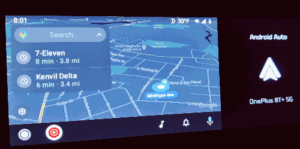Kia software I’ve been driving the Kia Niro for nearly a year and was sitting on a Kia software update because the car had refused to accept it. I thought that I would head to a dealer at some point and get them to handle it. however, a few months ago, the company managed to …
Category: Articles & Commentaries
Discussions on topics of interest to drivers concerning things they may not understand about their vehicles as well as articles on the future of the auto industry.
Permanent link to this article: https://dashboardsymbols.com/2025/08/ford-recalls-its-recalls/
Permanent link to this article: https://dashboardsymbols.com/2025/08/kia-software-update-surprises/
New Lexus video added to our YouTube channel
New Lexus video We’ve added a new Lexus video to our YouTube channel covering 2023 and newer Lexus NX, RX, RZ, and TX models whose key fob batteries have died. These models hide the key hole in a very awkward fashion but we demonstrate the back-up processes needed to open and start them. There is …
Permanent link to this article: https://dashboardsymbols.com/2025/08/new-lexus-video-added-to-our-youtube-channel/
Alfa Romeo back-up entry and start review complete
Alfa Romeo back-up We have completed a full review of Alfa Romeo back-up entry and start processes and find that the company has not changed any of those processes. These back-up processes are necessary in keyless start vehicles in the inevitable event of the battery in the key fob dying. The last model introduced to …
Permanent link to this article: https://dashboardsymbols.com/2025/08/alfa-romeo-back-up-entry-and-start-review-complete/
Alfa Romeo symbols update pushes total well over 100
Alfa Romeo symbols We’ve finished a review of Alfa Romeo symbols, an update that added 14 entries and pushed the total to 118 warning lights and indicators! Alfa did not add any new systems but of the 14 new entries, six are brand new indicators. For example, the company’s Drowsy Driver indicators, two of them, …
Permanent link to this article: https://dashboardsymbols.com/2025/08/alfa-romeo-symbols-update-pushes-total-well-over-100/
An ABS system rant
ABS system As we finish an Alfa Romeo symbols update, there has to be something said about an ABS system symbol the company uses. ABS ACTIVE (right). ABS, or Anti-lock Braking System, for years has operated under the radar helping to prevent the wheels from locking up during braking. This helps maintain tractive contact with …
Permanent link to this article: https://dashboardsymbols.com/2025/08/an-abs-system-rant/
How can green and blue indicators be warning lights?
Green and blue indicators We’re in the middle of an update of Alfa Romeo symbols and indicators and noticed that the company labels a handful of green and blue indicators as warning lights in the Giulia and Stelvio models. This just doesn’t seem right. At all. And looking back, Alfa Romeo has been doing this …
Permanent link to this article: https://dashboardsymbols.com/2025/08/how-can-green-and-blue-indicators-be-warning-lights/



Ford recalls its recalls
Ford recalls While going through a Consumer Reports piece on recalls they noted a case that required four returns to the dealer to be finally fixed properly. This brought to mind that there seemed to have been a number of Ford recalls in the last few weeks that were repeats. Sure enough, a review of …
Continue reading